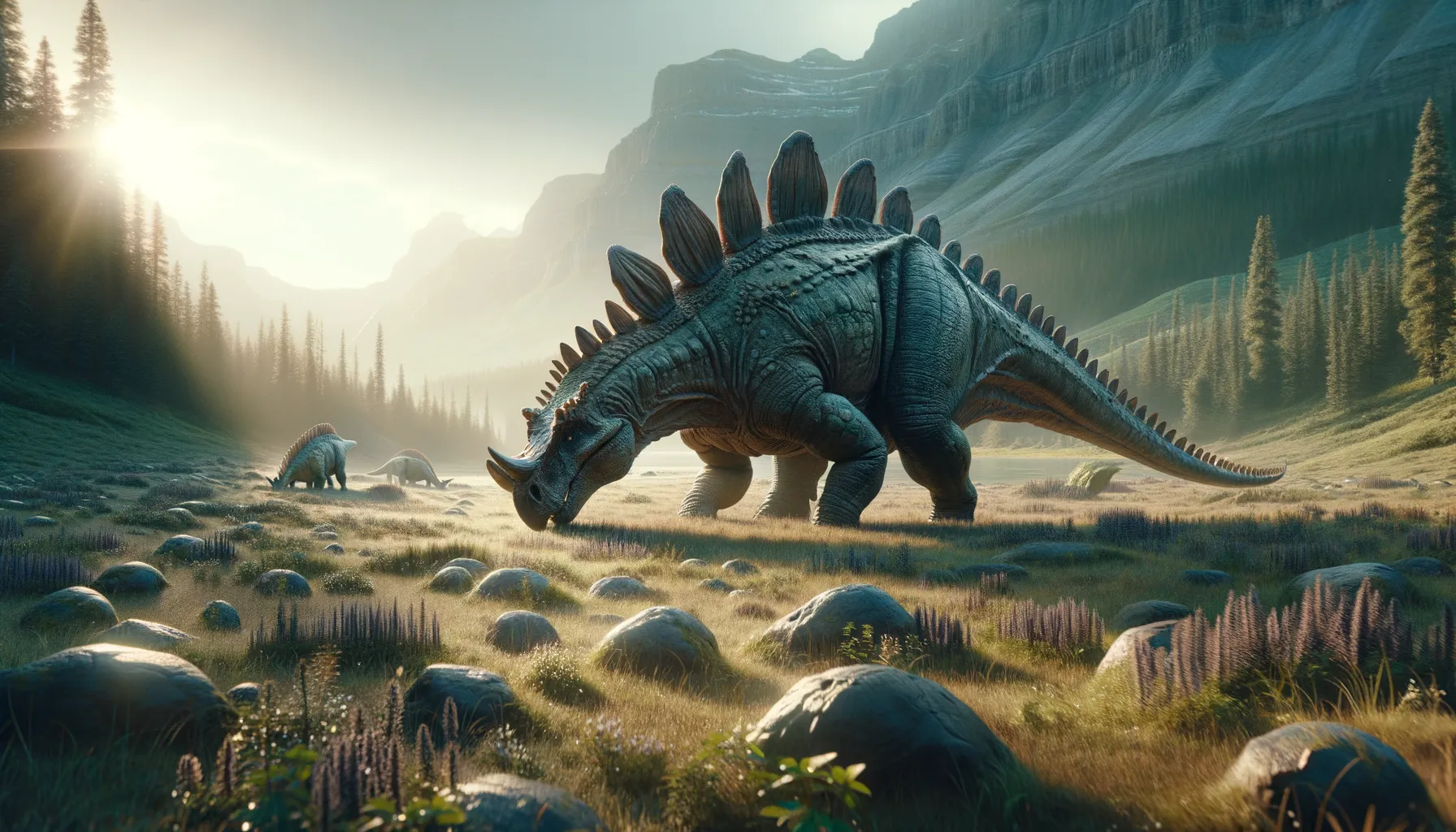
Edmontonia
Armored guardian of the ancient lands.
Period
Cretaceous
Length
Around 22 feet long.
Height
About 6 feet at the hips.
Weight
Approximately 3 tons.
Edmontonia was a heavily armored dinosaur that lived during the Late Cretaceous period. It was a member of the nodosaur family, known for their spiky armor without tail clubs. Edmontonia's distinctive feature was its large shoulder spikes, providing defense against predators. This herbivore roamed North America and preferred low-lying vegetated areas, relying on its armor for protection while grazing.
Diet
Edmontonia was a herbivore that fed on low-lying vegetation. It used its beak-like mouth to strip leaves from plants, likely thriving in areas abundant with ferns and other prehistoric flora.
Hunting
As a herbivore, Edmontonia did not hunt but was often at risk from predators. Its main focus was on finding sufficient plant material to sustain its large body.
Environmental challenges
Edmontonia faced challenges such as predation by large carnivorous dinosaurs and competition with other herbivores for food resources. Its large, armored body was key in defending itself against predators. Additionally, it had to endure varying climatic conditions and changes in its habitat over time.
Speed
Slow mover due to heavy armor.
Lifespan
Estimated several decades in the wild.
First discovery
Discovered in Alberta, Canada in 1924.
Fun Facts
- Edmontonia was a heavily armored dinosaur that lived during the Late Cretaceous period, about 76.5 to 67 million years ago.
- This dinosaur was part of the nodosaur family, which were plant-eating dinosaurs known for their strong body armor and lack of tail clubs.
- Edmontonia had rows of bony plates and spikes along its back and sides, providing protection against predators.
- Despite its intimidating armor, Edmontonia was an herbivore, grazing mostly on low-lying plants.
- Fossils of Edmontonia have been found in North America, specifically in regions that are now part of Canada and the United States.
- Unlike some of its relatives, Edmontonia relied on its armored body for defense rather than offensive weapons like horns or sharp claws.
Growth and Development
From hatchling to adult, Edmontonia would have gone through significant growth phases, starting small and gradually developing its thick armor. The armor, made of bony plates, would have become denser as it matured, providing better protection over time. Nutrition from a consistent diet of plants was crucial for its growth.
Habitat
Edmontonia favored forested and plains areas that offered plenty of food resources. It needed environments where it could both feed and hide from predators efficiently. These habitats had a variety of vegetation, providing it with ample grazing grounds.
Interaction with other species
Edmontonia interacted with both predators and other herbivores of its time. It maintained a defensive posture to prevent attacks, relying on its armor and spikes. Collaboration with its own kind might have occurred, especially in herding to enhance survival chances.
Natural lifespan
Edmontonia likely had a natural lifespan extending up to several decades if it avoided predation.
Reproduction
Edmontonia reproduced by laying eggs, possibly in nests similar to birds today. The young likely stayed in protected areas until their armor developed further for protection. Parental care, if provided, would have been crucial in guarding eggs from predators.
Social behaviour
Edmontonia might have engaged in herding behavior, using group dynamics for protection against large predators. Social interactions with individuals of its kind would help in alerting to incoming threats. Besides this, they were likely solitary during feeding to minimize competition.
Fossil locations
Edmontonia fossils have been found primarily in North America, especially in Canada and parts of the United States. These sites provide vital information about the diverse ecosystems of the Late Cretaceous. Fossilized remains include armor plates and bones, informing about its physiology and defensive capabilities.
